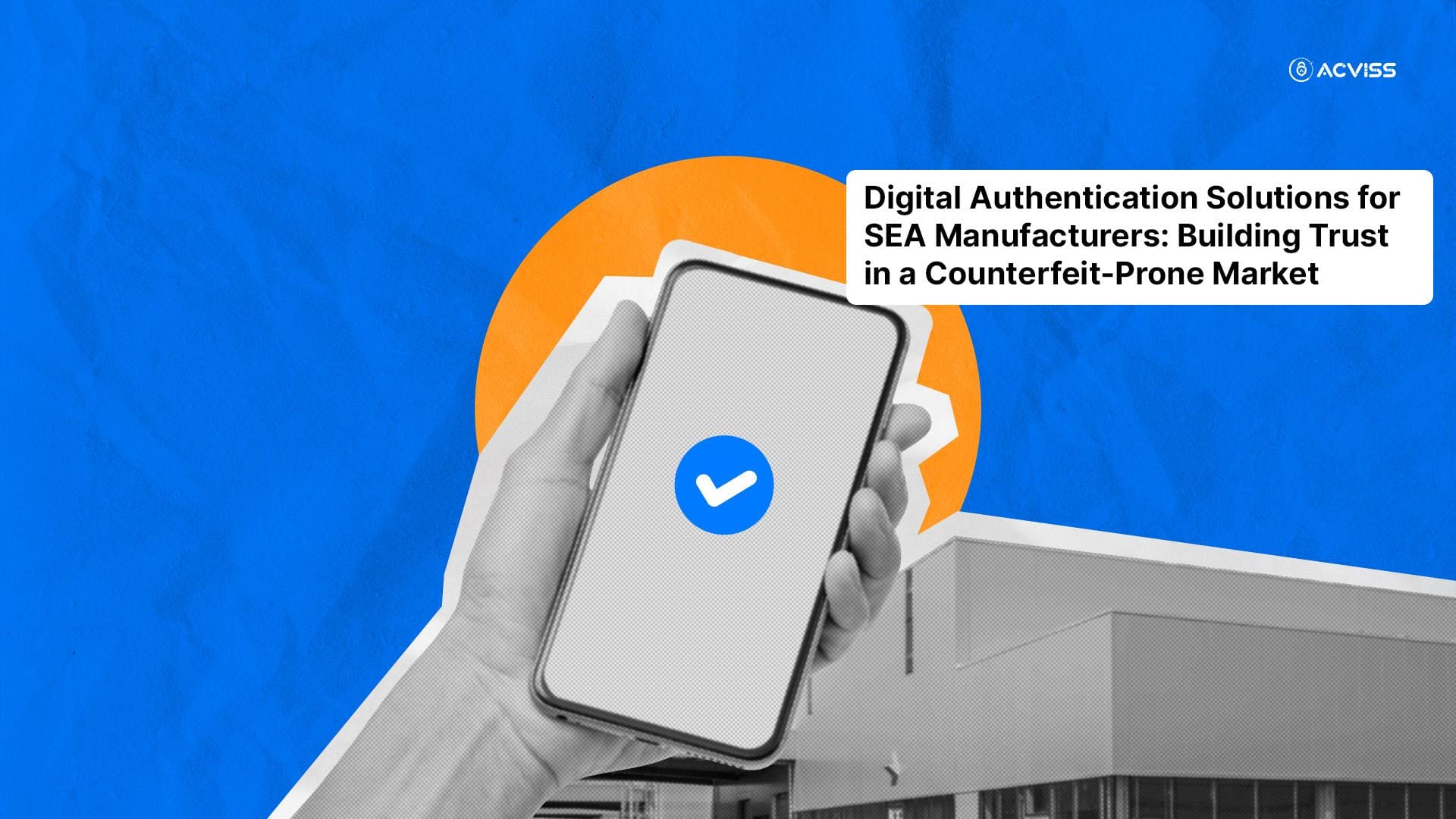How Digital Authentication Solutions Build Trust for SEA Manufacturers

The manufacturing landscape in Southeast Asia has seen rapid growth over the past decade. From electronics and automotive parts to pharmaceuticals and consumer goods, the region has become a global production hub. But with this expansion comes an equally pressing challenge: the surge of counterfeit products infiltrating supply chains. For manufacturers, the threat is not only about lost revenue but also reputational damage, legal liabilities, and diminished consumer trust.
This is where digital authentication solutions step in. They represent a new frontier of brand protection, where advanced technologies empower manufacturers to verify, track, and safeguard their products across the supply chain.
Why Authentication Matters for Southeast Asian Manufacturers
Counterfeiting is no longer a small-scale operation confined to local markets. Today, counterfeiters operate with sophistication, exploiting gaps in supply chain management and leveraging online marketplaces to push fakes into global circulation.
For manufacturers in Southeast Asia, this creates a dual challenge: ensuring product authentication at the consumer level while maintaining traceability throughout a vast and often fragmented supply chain.
The risks are substantial:
- Revenue loss: Counterfeits siphon billions of dollars annually from legitimate businesses.
- Eroded trust: Once consumers question authenticity, brand verification becomes critical to survival.
- Legal exposure: Weak IP protection and lapses in trademark enforcement leave companies vulnerable.
- Supply chain disruption: In industries like pharmaceuticals and food, counterfeit infiltration can compromise public health.
A robust authentication programme, therefore, becomes not just a defensive measure but a strategic investment in brand value and sustainability.
The Role of Digital Authentication in Brand Protection

Traditional methods such as holograms or barcodes served their purpose in earlier decades, but counterfeiters have become adept at replicating them. Digital authentication solutions elevate protection by combining unique identifiers with real-time verification technologies.
Two core aspects define these systems:
- Non-cloneable labels
- Track and trace programmes
Together, they transform product verification into a seamless, secure, and scalable process.
Non-Cloneable Label Solutions: A Modern Shield
At the heart of any effective authentication strategy lies the label. But not all labels are created equal. Counterfeiters can replicate standard QR codes or packaging with alarming ease. Non-cloneable labels address this weakness by embedding features that cannot be copied, duplicated, or tampered with.
These labels act as a digital certificate for the product. When a consumer scans it, they instantly verify details such as manufacturing date, origin, and authenticity. For the manufacturer, it becomes a two-way channel: not only is the product authenticated, but valuable data on consumer behaviour is also captured.
Solutions like Certify exemplify this shift. They create unique, non-replicable security codes that offer assurance to both consumers and businesses. By removing the possibility of duplication, they serve as the first line of defence against counterfeiting.
Track and Trace: The Backbone of Product Traceability
Authentication is powerful, but on its own, it is not enough. To truly secure the supply chain, manufacturers need visibility from end to end. This is where track and trace technologies play a critical role.
With a comprehensive product traceability programme, every step of the product’s journey can be logged, monitored, and verified. From manufacturing to distribution and retail, the movement of goods is recorded in real time. This level of transparency helps to:
- Detect suspicious activities and prevent counterfeit infiltration.
- Simplify compliance with international trade and safety regulations.
- Strengthen brand protection by showing customers the proof of origin.
- Build resilience in supply chain management by reducing blind spots.
Subtle but powerful solutions, such as Origin, enable manufacturers to implement blockchain-backed traceability. This not only ensures data integrity but also instils confidence in regulators, partners, and consumers who demand proof of authenticity.
The Wider Scope of Digital Authentication

Beyond just preventing counterfeit products, digital authentication opens the door to a host of strategic benefits.
1. Enhancing Consumer Trust
Consumers are increasingly cautious. When they can verify a product instantly through a scan, trust in the brand deepens. This level of brand authentication goes beyond packaging aesthetics to deliver real value.
2. Enabling Data-Driven Decision Making
Every scan, every verification attempt generates data. Manufacturers gain insights into buying patterns, regional demand, and potential grey-market leakages. This intelligence feeds into more effective supply chain management and marketing strategies.
3. Protecting Intellectual Property
Strong trademark protection and IP protection require more than legal documents. By embedding authentication into the product itself, manufacturers create a tangible enforcement mechanism against infringement.
4. Supporting Regulatory Compliance
Industries like pharmaceuticals, food, and chemicals are under increasing regulatory pressure. Authorities are demanding not just paperwork but technological proof of authenticity and origin. Digital authentication provides the foundation for meeting these requirements without slowing down operations.
Why Southeast Asia Needs to Move Faster
While the technology exists, adoption rates vary. Many small and medium manufacturers in SEA still rely on traditional packaging methods. Yet the region’s vulnerability to counterfeit infiltration makes digital adoption not optional but urgent.
- In pharmaceuticals, unauthorised generics and fake medicines flood markets, risking lives.
- In electronics, counterfeit parts damage reputations and create safety hazards.
- In agriculture and food, unverified origins compromise both safety and export opportunities.
The cost of doing nothing is far higher than the investment in modern anti-counterfeiting solutions. By embracing digital authentication, SEA manufacturers position themselves for global competitiveness.
Bringing It Together: Authentication as a Strategic Advantage

Digital authentication is not a single tool but an integrated programme of solutions and technologies. Non-cloneable labels provide the front-line shield, while track and trace systems deliver visibility across the supply chain. Together, they offer manufacturers a reliable way to ensure brand verification, product authentication, and product traceability.
In doing so, they not only combat counterfeiting but also unlock new opportunities for brand loyalty, consumer engagement, and regulatory compliance.
The time for Southeast Asian manufacturers to act is now. Those who embrace digital authentication solutions will safeguard their brands, strengthen their supply chains, and earn the trust of consumers in a world where authenticity is currency.
Conclusion
Counterfeiting is evolving, and so must the defences against it. For manufacturers in Southeast Asia, digital authentication is no longer a luxury but a necessity. By combining non-cloneable label solutions with comprehensive track and trace programmes, brands can secure their supply chains, protect their IP, and reassure their customers.
If you are interested to learn more about how authentication and traceability programmes can safeguard your business, get in touch with us today.
